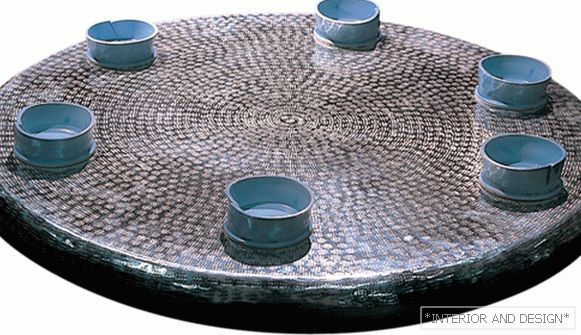
At the annual Consumer Electronics Show (CES), companies from around the world showcase their latest and greatest inventions. The booths in Las Vegas were dominated by home helpers, health gadgets, robots, and new virtual reality headsets. A breakthrough in wireless communications will be 5G, which can transfer gigabits of data per second from 2020 onwards. The focus of attention is autonomous transport: electric cars and unmanned electric buses. Home helpers
Related: Smart Living: Samsung launches furniture
The jokes about how soon Alexa will speak out of every iron are no longer an exaggeration. In fact, it is a speaker with sensitive microphones and with the function AlwaysOn. It can control smart home devices, play music from the phone, and order products from the Amazone service using voice commands. Google ensured that its own assistant was not worse. Lenovo, LG and Sony will release Google Assistant speakers with screens in 2018. Samsung also showed off an updated version of its own assistant named Bixby. Bixby can be a part not only of your phone. Samsung plans to incorporate this technology into other appliances, such as televisions and refrigerators.
Retrofuturism
One of the striking trends this year was the return to the "retro-futuristic" robots, combining modern technology with the aesthetics of the mid-XX century. Robots dogs and even a robotic butler named CLOi, released by LG, appeared. Health
At CES, there were gadgets focused on improving health and well-being. Philips launched a headband to normalize sleep. Swim.com and Spire Health Tag collaborated to develop a “smart swimsuit” that would help swimmers track their workouts. Neutrogena introduced SkinScanner, which is attached to the iPhone, syncs with the Skin360 app to help users evaluate the health of their skin.
The virtual reality
Related: Virtual Reality Glasses: Nonobject Magic Helmet
Virtual reality (VR) has again become a source of discussion and controversy. HTC introduced the Vive Pro headset with a built-in audio display with a high resolution of 2880 x 1600. The Irish company Design Partners showed its “smart glove”, a tactile human-computer interface system for VR. The glove integrates sensory and physical sensations into the VR experience, which is an important milestone in making VR more realistic. Google, along with Lenovo and Yi Technology, also introduced a line of VR180 cameras that allow users to easily upload their own content to VR.
Televisions with artificial intelligence
Artificial intelligence is penetrating an increasing number of applications, devices, and networks. Now its platforms are not smartphones or laptops, but TVs. The new 85-inch Samsung TV uses neural networks to automatically enhance the picture. The company also claims that artificial intelligence on TV learns with time, improving this algorithm.



